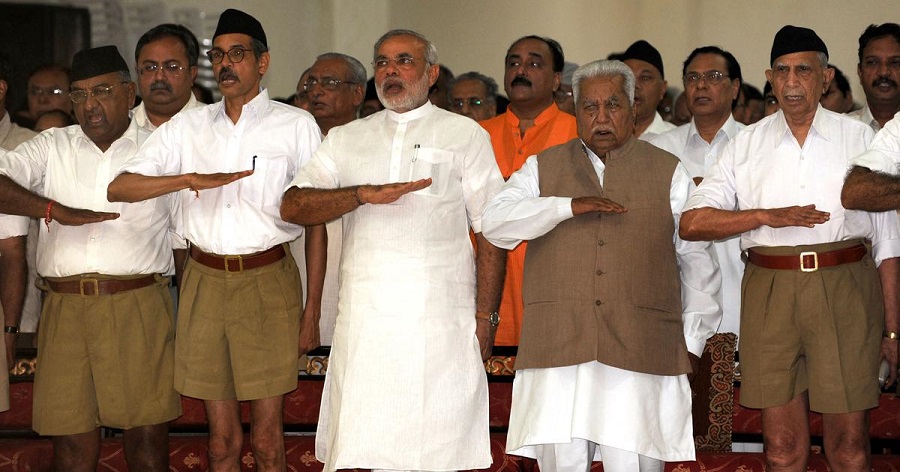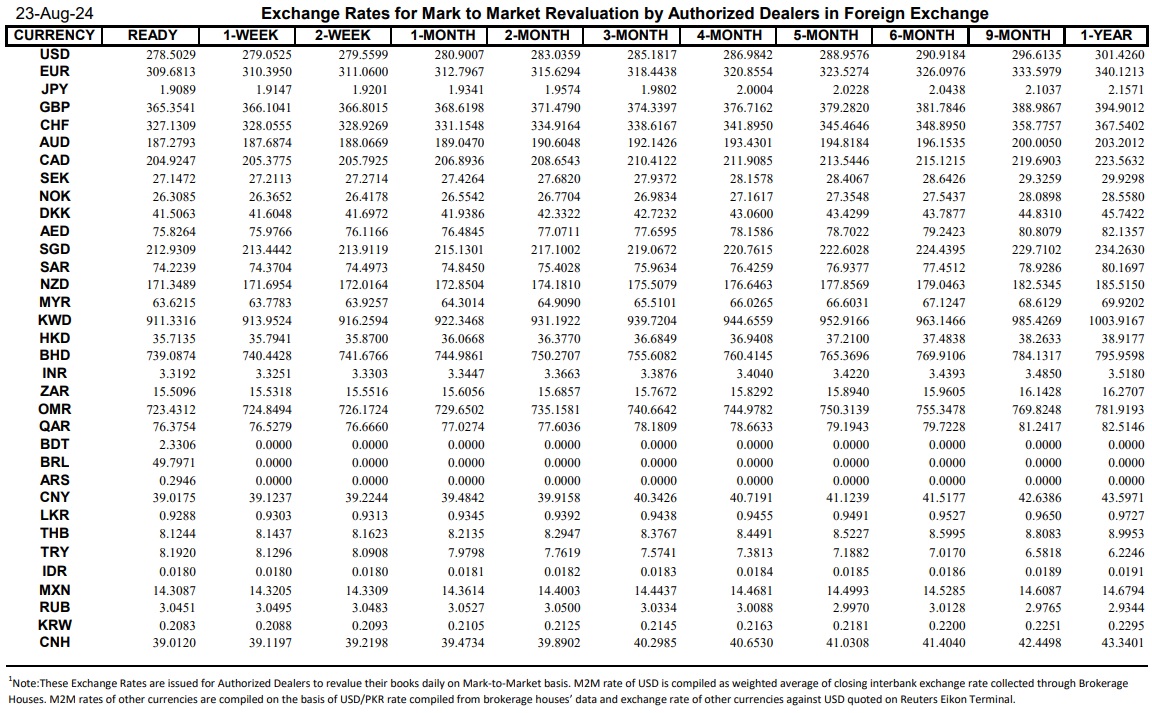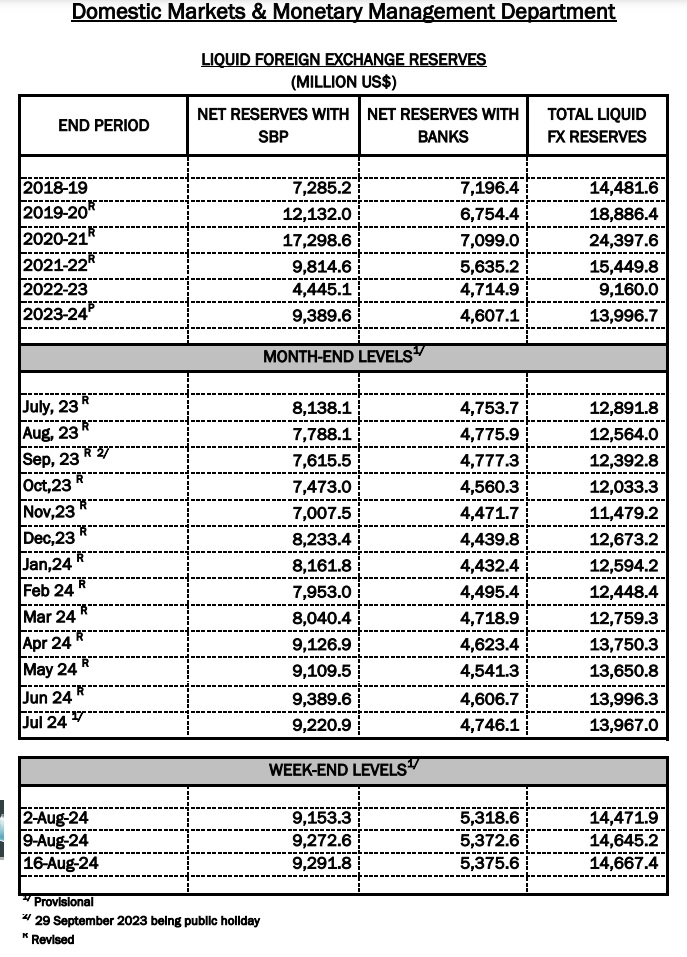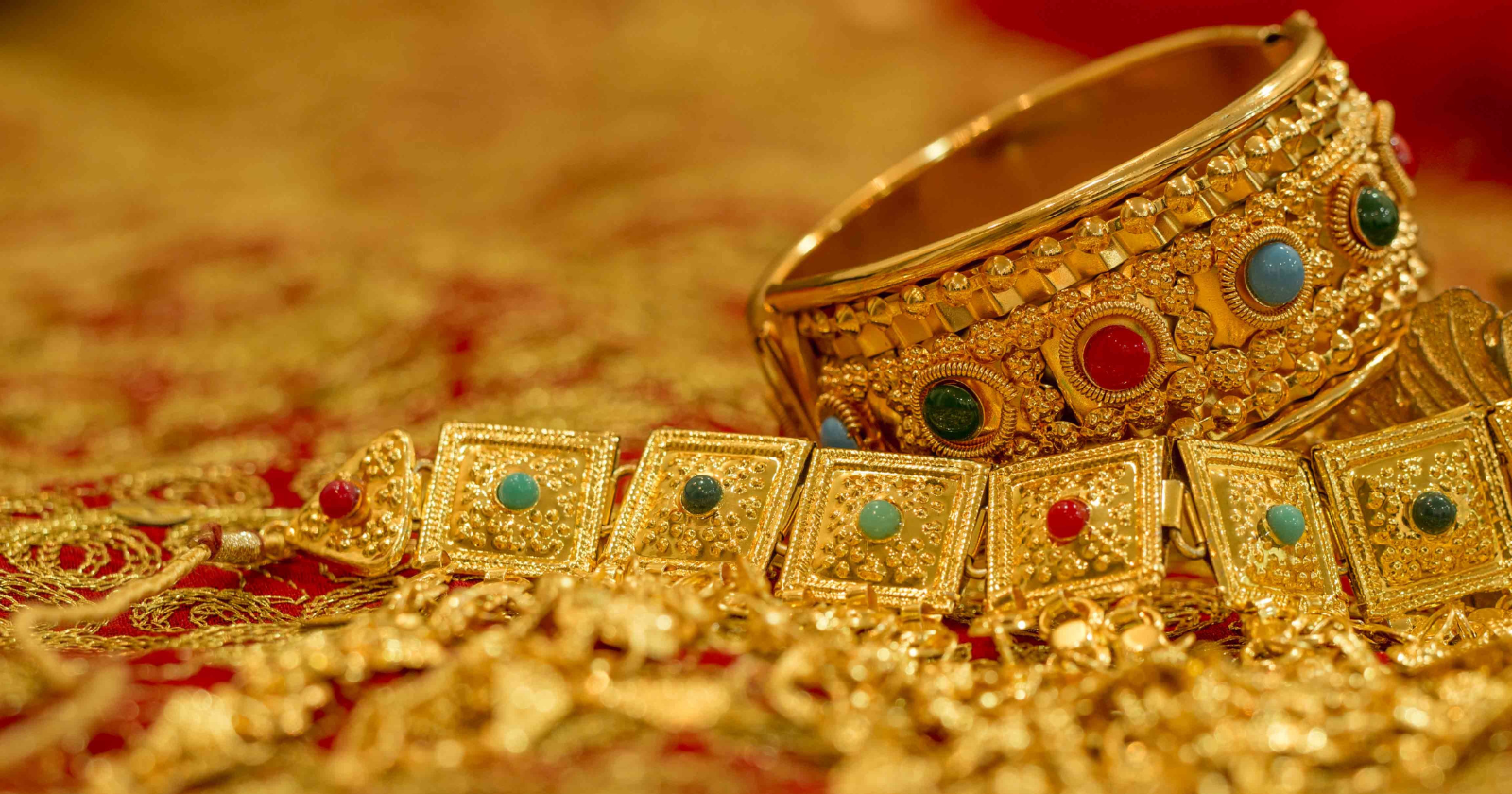By Harsh Mander
When in 1980, I first walked through the gates of the Lal Bahadur Shastri National Academy of Administration in Mussoorie, the director who led our initiation into public service was a man of towering moral stature, the legendary PS Appu. My batch-mates in the Indian Administrative Services and I were fortunate that in our months under his tutelage, we were inspired by Nehruvian ideals of secular democracy and Ambedkarite principles of constitutional morality. I have no memory in all of those months of any public display, either among the faculty or my own comrades, of communal or caste prejudice. Those were still times in the journey of the Indian republic when any of this was unthinkable.
It was already a very different India when I returned to Mussoorie 13 years later in 1993, now as a member of the faculty in the National Academy. We learnt there that a year earlier, after the demolition of the Babri Masjid, the topper of the earlier batch – an alumni of the Indian Institute of Technology – had organised a massive celebration in the campus of the academy. I was harrowed imagining this officer heading a district in Uttar Pradesh that is charred by a communal conflagration. It was clear to me that our work with our officer trainees was cut out for us.
Fortunately, our director again was a person who combined scholarship with exceptional moral fibre, NC Saxena. With him, and a sterling set of colleagues in the faculty, we strived hard to confront and hopefully dismantle the communal and caste prejudices that by now were not uncommon among the officer trainees. I like to believe that we had a measure of success. Many years have passed since then, and our trainees now hold senior official positions. As a teacher is wont to doing with his students, even in my self-chosen exile from the civil services, I still watch out for them from a distance. And I am encouraged as I see many of them uphold constitutional values.

During my years in the faculty in the Lal Bahadur Shastri National Academy of Administration in Mussoorie, my first lectures to each successive batch would underline that they were servants first of the Constitution; second, they were servants of the most vulnerable and oppressed persons in the area that they served; and only after this were they servants of the elected government under which they served.
I never tired of saying to them that it was the exercise of conscience and not obedience that was their paramount moral duty. If constitutional pledges or the rights of the most disadvantaged citizen were imperilled by the orders of the elected government, it was their duty to resist, even disobey such unconstitutional orders.
I would go on to tell my trainees that the challenges to their conscience would be most acute during episodes of communal and caste mass violence. Chances are that their political superiors would seek from them that they look away as radicals from organisations of dominant religious or caste groups assault the bodies and properties of religious and caste minorities. At this time, their predominant duty, overriding every other, would be to defend the religious and caste minorities from majoritarian violence, even if this meant disobeying their political superiors.
It is in this spirit that India’s iconic first home minister Sardar Vallabhbhai Patel likened the civil services to the “steel frame” of a newly independent nation. This ancient nation reborn was being rebuilt amidst the horrific violence of Partition. There were separatist calls from many corners. There was the sombre legacy of millennia of caste oppression. In such times, some politicians and religious leaders might mobilise people with calls to religion, caste and region. But a grateful people would rely upon the civil services to act as the steel frame to hold the country together and protect its most vulnerable people.
In his historic first address to the first batch of the Indian Administrative Service at Metcalfe House in Delhi on April 21, 1947, four months before India became free, Sardar Patel called upon the civil servants to “treat the common men (and women) in India as your own”, to “feel yourself as one of them”. Importantly, he often said that civil servants must not participate in politics, and should not involve themselves in “communal wrangles”. In 1949, addressing the constituent assembly, he paid high tributes to the civil services saying that had they in these difficult times not performed their duties, the union of India would have fallen apart.
In the decades after independence, and in contemporary times, we may ask to what extent have the civil services indeed been the “steel frame” that Sardar Patel had exhorted them to be, defending the country against communal, caste and regional mobilisations that threatened vulnerable minorities and fractured the country? But this is not the question I will address here. For that, another space.
Instead, I ask here a different question. The principle was uncontested so far that the paramount allegiance of a civil servant must be to the constitution, even if in practice there were deviations. I ask if this principle itself is under assault with the recent order of the Union government permitting civil servants and judges to be members of the Rashtriya Swayamsevak Sangh?
The official defence of this order is that it is reasonable only to bar the participation of civil servants and judges in political organisations, whereas the Sangh is a cultural organisation. This defence is of course patently disingenuous. The Sangh has a large number of sibling organisations – some estimate the numbers to be 80 – and these are often called the Sangh Parivar, or the family of the Rashtriya Swayamsevak Sangh. These organisations are assigned diverse roles and mobilise different age, caste and gender demographics, but all of these advance the ideology of the Sangh.
It is no secret that the Bharatiya Jana Sangh in the decades after independence, and the Bharatiya Janata Party today are the political wing of the Sangh, and that for the BJP, the Sangh is both their ideological mentor and the principal vehicle to build their mass support. Senior members of the cabinet take counsel, and possibly directions, from the Sangh. The Sangh is reportedly closely consulted in selecting chief ministers and ministers of the union cabinet. The Sangh is reputed to be the world’s largest civic organisation. Literally millions of its members openly campaign for the BJP in every state and national election.
Veteran legal scholar AG Noorani quotes many Sangh documents that explicitly affirm the political character of the organisation. Rajendra Singh Tomar, the fourth Rashtriya Swayamsevak Sangh supremo, for instance in a court affidavit declared in 1978 that “the work of the RSS is neither religious nor charitable but its objects are cultural and patriotic… It is akin to political purposes (sic.) though RSS is not at present a political party…” The term “cultural” is explained in Sangh documents as not meaning “art, drama, music, dance, etc. The word ‘Sanskritik’, or cultural used in the Sangh work has a very wide sweep… expounded by the Guide and Philosopher of the RSS Shri Golwalkar… These include all aspects of society or nation; viz. political, social, economic, customary, morality, language, script and in general the Hindu way of life…”
The most influential Sangh thinker, supremo Golwalkar held that politics should be conducted “as one of the commands of Religion, of our normal cultural activities and (we must) accept the responsibility”. When asked if the Rashtriya Swayamsevak Sangh aims to capture power, he replied: “We have kept before ourselves the ideal of Bhagwan Shri Krishna who held a big empire under his thumb but refused to become an emperor himself.”
The former chief minister of Uttar Pradesh, Kalyan Singh, was even more explicit about the political role of the Rashtriya Swayamsevak Sangh. In Aligarh in February 2000, he declared: “I have spent a greater part of my life in this organisation [RSS] and I can say that right from the distribution of election tickets [to candidates] in BJP to selecting Cabinet Ministers, it is only the RSS which calls the shots.”

The problem is not just that the latest union government order permits government officials to join an organisation that is in practice energetically and emphatically political, closely aligned to the BJP. This would be serious enough. But the much graver problem is the kind of politics that the Rashtriya Swayamsevak Sangh espouses.
The dangers of this are best articulated in a government circular dispatch of February 4, 1948, issued by the Home Ministry headed by Sardar Vallabhbhai Patel just days after Mahatma Gandhi’s assassination. This explained the reasons for the first ban in free India on the Rashtriya Swayamsevak Sangh, which the dispatch says was “to root out the forces of hate and violence that are at work in our country and imperil the freedom of the nation…”.
It observed further that “Undesirable and even dangerous activities have been carried on by members of the Sangh… (who) have indulged in acts of violence involving arson, robbery, dacoity, and murder and have collected illicit arms and ammunition. They have been found circulating leaflets exhorting people to resort to terrorist methods, to collect firearms, to create disaffection against the government and suborn the police and military”. It further deplored “the cult of violence sponsored and inspired by the activities of the Sangh (that) has claimed many victims. The latest and most precious to fall was Gandhiji himself”.
The ban on the Rashtriya Swayamsevak Sangh was lifted a year later, on July 11 1949, based on undertakings by Sangh leaders that the Sangh constitution would make more explicit the loyalty of the organisation to the Indian constitution; that it would respect the national flag; and that persons believing or resorting to violent and secret methods will have no place in the Sangh. But the fact is that none of these conditions were actually ever fulfilled.
The Rashtriya Swayamsevak Sangh shakhas continue to fly only saffron flags. The national headquarters of the Sangh also did not fly the national flag from 1950 to 2002. Explanations for this in Sangh writings are ambiguous. But I speculate that their main objection is to the three equal stripes of saffron, white and green symbolic of equal rights of people of Hindu, Muslim and other minority religions, which contradicts their paramount political objective of establishing a Hindu India. The continued commitment of the Rashtriya Swayamsevak Sangh to a Hindu nation hits at the heart of the Indian Constitution that guarantees religious freedom and equal citizenship rights to people of all religious belief systems.
My weightiest and most urgent objection to allowing membership in the Rashtriya Swayamsevak Sangh to government officials and judges is the role of the Sangh and its sibling organisations in stoking and organising communal hatred and violence. Hate speeches by members of these organisations that call even for the genocide and mass rape of Muslims have become a routine element of public life in India, even more so in the years when India was led by Narendra Modi.
The Rashtriya Swayamsevak Sangh and the organisations of the Sangh are also widely believed to be responsible for igniting and organising communal riots during Partition and in all the decades that followed. At least six judicial commissions of inquiry into major episodes of communal violence – the Jaganmohan Reddy report on the Ahmedabad riots 1969; the DP Madon report on the Bhiwandi riots in 1970; the Vithayathil report on the Tellicherry riots in 1971; the Jitendra Narain report on the Jamshedpur riots in 1979; the P Venugopal report on the Kanyakumari riots of 1982; and the report on the Bhagalpur riots in 1989 – have explicitly indicted the Rashtriya Swayamsevak Sangh for its role in these major communal flare-ups that resulted in extensive loss to the life and property of Muslim citizens.
The central role of the Sangh in inflaming communal violence has also widely been documented by scholars and media persons. Paul Brass, based on decades of careful ethnographic research in communally sensitive districts of Uttar Pradesh, found what he called “institutionalised riot systems”. In my handling of riots as a district officer, and my extensive engagement as a peace and justice worker after 2002 in many sites of mass violence, I too have observed closely the role of the Sangh organisations in what I call the “manufacture of hatred”, because communal hatred of a scale that ignites mass violence is rarely if ever spontaneous. The other role of these organisations in mass communal violence is in organising the logistics of mass violence, such as of weapons, voters’ lists and mobs. Without the essential role of violent sectarian organisations that inflame hatred and organise mass violence, riots cannot happen, not in India, not in Pakistan or Bangladesh, not in any part of the world.
Meerut. Jamshedpur. Bhiwandi. Villipuram. Nellie. Delhi. Bhagalpur. Tsundur. Bombay. Gujarat. Kandhamal. Khairlanji. Muzaffarnagar. These are only a few among hundreds of milestones of mass communal and caste violence in which state authorities failed to uphold their constitutional duties. Each disgraceful milestone left in its train a long trail of the blood of innocents.
Even so, and I reiterate, up to now at least the principle was unambiguous, that a public servant’s paramount fidelity must be to the constitution of the republic.
Now imagine this. A menacing mob, armed with sticks, daggers, acid bombs and country-made pistols converge on your home. The frenzied men, baying for the blood of people of your faith or caste, burn down their homes and shops along their way. Squads of men strip women naked and gang-rape them in public view. As they advance, terrified children, women and men frantically try to flee. But they slice them with their daggers, set them on fire or gun them down.
At such a time, what would you do? Cowering, wretched with fear, maybe you would pray to your god. But to save the lives and properties of those you love, it is only to the police and local civil authorities that you would desperately look.
But imagine further. You are from the community that is being targeted with hate violence, and you know that your district magistrate, or your police chief, or the head of your local police station, is a member of the Rashtriya Swayamsevak Sangh. He participates in the drills of the local Rashtriya Swayamsevak Sangh shakha. He offers the Rashtriya Swayamsevak Sangh salute in public functions. Could you then trust him to halt the murderous mobs and lift you into safety?
In nearly two decades in the Indian Administrative Service, I served as the head of six districts in Madhya Pradesh and Chhattisgarh. This was during the turbulent years of the anti-Sikh pogrom of 1984, the Rath Yatra with its trail of communal riots, and the demolition of the Babri Masjid. In these fevered times of communal or caste mass violence, I learnt how decisive could be the role of the district magistrate and the police leadership.
If these public officers were free from religious and caste prejudices, if they were courageous, compassionate and fair, they could douse in a matter of hours the most fearsome fires of communal and caste savagery. But instead, if they buckled to illegal orders from their political superiors or – much worse – if they too were powered by communal or caste hatred, they would be wilfully culpable in the extermination of sometimes hundreds of innocent lives.
This, then, is the full sombre import of this government directive. That from now, a district magistrate, a police officer, a judge, a secretary to government, a professor, a teacher, a government doctor, can be openly a member of an organisation which rejects the pluralist, secular core of the Indian constitution. They can be members of an organisation whose affiliates have stokes hatred and sometimes even called for genocide and ethnic cleansing; and which has a profoundly troubling alleged history of fuelling communal violence in the gruesome Partition massacres and in major conflagrations of communal violence since independence.
When the history of the wilful destruction of India’s secular democracy will be written, this will be recorded as an epochal and decisive milestone of this ruin. It would mark the tragic final burial of Sardar Patel’s fabled but already mangled and twisted steel frame.
Harsh Mander, justice and peace worker and writer, leads Karwan e Mohabbat, a people’s campaign to counter hate violence with love and solidarity. He teaches at FAU University of Erlangen-Nuremberg, and Heidelberg University, Germany; Vrije University, Amsterdam; and IIM, Ahmedabad.
Note: The above article by Harsh Mander was originally published by scroll.in on August 20, 2024.













